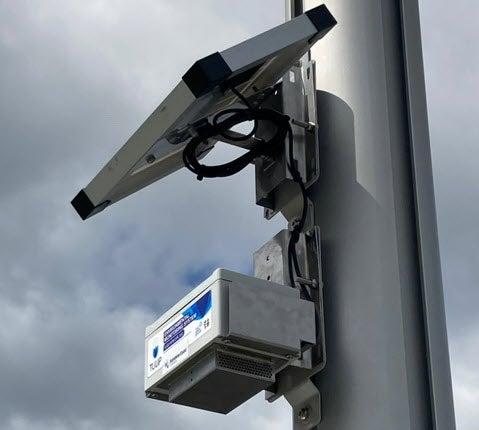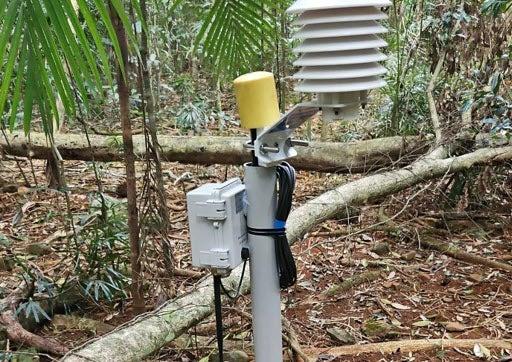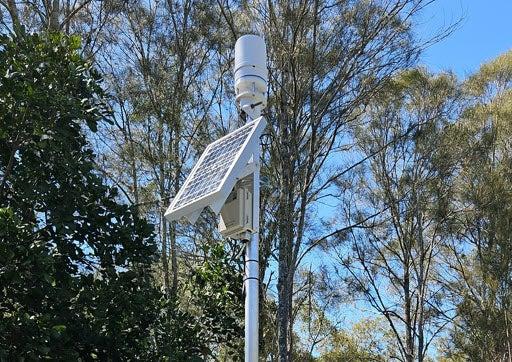Environmental
See how environmental data is collected
Ambient temperature sensor
Our population and built environment is increasing the use of concrete and asphalt (heat absorbing) at the expense of cooling vegetation. This means urban heat is a significant issue for council to manage.
Fifty ambient temperature sensors have been installed across the Sunshine Coast. They collect real-time information about temperature and humidity to help council improve future design decisions and over the longer term, climate change policy decisions.
Environmental monitoring station
Provides information about temperature, humidity, particulate matter (eg dust), gases (ozone, nitrogen dioxide, and carbon monoxide) and sound pressure (decibels) - does not record audio.
Soil moisture and temperature sensor
Provides real-time and historical data about sand temperature and humidity at turtle nesting locations.
Installed at Mary Cairncross to understand soil moisture in the forest and effects of seasonal and climate changes on plants and wildlife.
Stream height gauge
Sensors in the ground and in rivers monitor water levels. Alerts are sent to council officers when roads, bridges and waterways are about to flood. Information about closures is available on the SCC app.
Thermal image camera
Thermal images provide real-time data about surface temperatures of different materials. Capturing comparisons (eg between asphalt, concrete, grass, canopy, shaded locations) can help council to better plan and design public areas using material and colours to enhance cooler spaces.
Thermal image data is being trialled with several other sensors and devices in the Woombye pilot sensor program. It has been used to assist council with its decision-making process for the Nambour forecourt.
Weather station
Provides real-time information about temperature, wind speed, rainfall, solar irradiance, vapour and atmospheric pressure.
Installed in six locations across the region to:
- Inform likelihood of heat stress due to high temperatures and humidity.
- Inform localised response for disaster management planning.
- Understand climate change trends.



